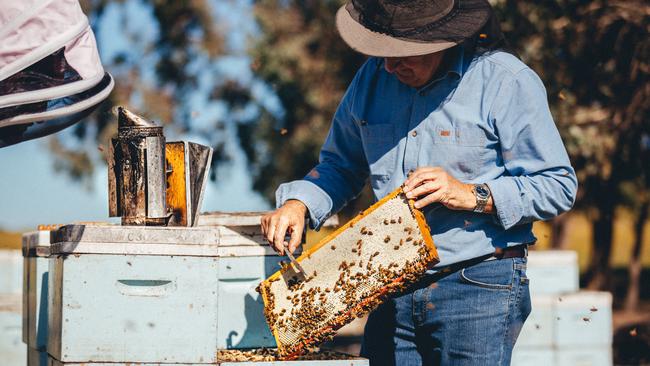Grocery manufacturing the new ‘sheep’s back’ of regional Australia
Our food, beverage and grocery manufacturing sector helps to bind the social fabric of our regions with jobs and economic prosperity.

The idea of a regional Australia is deeply ingrained in our national consciousness.
Whether it be the “boundless plains” we sing about in our national anthem, or the idea of Clancy’s overflow which haunts our mythology and reflects our own occasional longings to go bush and escape the urban life in which most of us live.
And we are all aware of the richness of regional Australia. The country was built on the back of a sheep and the minerals dug from the red earth. But now there is so much more.
Australia’s food, beverage and grocery manufacturing sector is worth more than $127.4bn in annual turnover, making it the biggest manufacturing sector with a huge footprint in the regions.
Of the sector’s 274,800 jobs nationally, 39.6 per cent or just over 108,000 people in regional Australia are employed by the companies that make the hundreds of groceries we look for in the supermarket.
Toilet paper, cream cheese, pet food, confectionary, canned fruit and veg, breakfast cereals, soups, non-alcoholic beverages, flour, honey, cheese, frozen foods — a sizeable proportion of the foods and other grocery items Australians buy every day are made in regional Australia.
Manufacturers take the raw commodity from our farmers and turn it into the products we all love, not only supporting our farmers but also ensuring Australians enjoy the best quality products too.
Backed by a reliable and efficient supply chain, our sector ensures we all have what we need to feed our family — making this sector the most essential industry in the country.
However, it is essential for regional life and community too. Our sector helps to bind the social fabric of our regions with jobs and economic prosperity even through fires, floods, droughts and pandemics.
When COVID-19 hit, this sector responded to keep the supermarket shelves stocked.
As consumers nationwide went on a prolonged buying spree, the companies went into overdrive to help meet demand — the workforce really stepped up as the essential heroes.
Businesses in this sector are as much as about the people they employ as they are the things that they make. While their brands might be known locally, nationally, and often internationally, it’s the workforce that is at the heart of this sector.
When the workforce of a site in Blaney, central NSW, heard that one of their colleagues lost their life to COVID-19, they knew how serious the situation had become as their loss drew them together. When the country locked down, our sector responded in a resilient and enduring way.
‘Having food, beverage and grocery manufacturing in regional areas provides the opportunity for people to have very rewarding careers in country towns’
Workforces across towns such as Blaney or Millicent in South Australia, Shepparton in Victoria or Bundaberg in Queensland, know the value of this sector and how essential it is beyond the products. Having food, beverage and grocery manufacturing in regional areas provides the opportunity for people to have very rewarding careers in country towns. Locals can enjoy a relaxed lifestyle, remain connected to their family, friends and workmates, and enjoy the support from many of the multinational and homegrown businesses that give back to their community.
Young people in regional areas can develop skills, learn a trade, and or aim to take on management roles, while enjoying the significant offerings of a regional area.
New arrivals to Australia who live in our regions also have many job opportunities within this sector as it is most often the largest employer in the area.
It is hard to go past many of the businesses in these towns without finding someone who has worked on the site their entire working life or who found the balance of a great career and country life. The pride and association from the workforce is inspiring.
As Will Ursell, managing director of Don Smallgoods, says, “Food manufacturing is a vital industry in regional Victoria. Don employs 1500 people in Victoria, 1300 in Castlemaine, of which more than 1100 are front-line workers. Food manufacturers employing people in our region is a big part of why centres like Castlemaine are thriving communities.”
You can’t equate the value of a great workforce with numbers, but Australia Bureau of Statistics data tells us that the value of the sector in regional areas is substantial.
Northern Victoria has emerged as a food and grocery manufacturing powerhouse, generating $9.23bn in output per year and paying more than $1.14bn collectively in wages to about 14,000 employees.
Capital investment is another key driver for the local economies. As business grows, it will invest. Businesses look to expand their footprint and create more job opportunities and output where they can.
These days you don’t have to “go a-droving” to enjoy a life in regional Australia.
The Australian Food and Grocery Council along with its member companies are proud that our industry continues to provide investment, innovation and, importantly, employ locals in regional Australia: the true powerhouse behind the products on the supermarket shelf.
Dr Geoffrey Annison is deputy chief executive of the AFGC.


